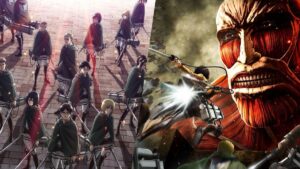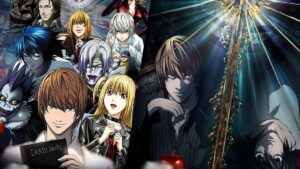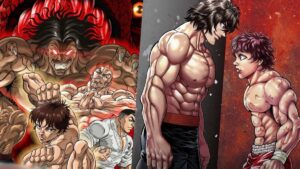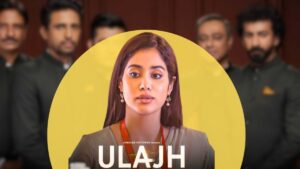
Demon Slayer, Unleashing the Heart of Battle: A Comprehensive Review of Demon Slayer: Kimetsu no Yaiba Season 3
Demon Slayer
Demon Slayer: Kimetsu no Yaiba has captured the hearts of anime fans worldwide since its debut, and its third season continues to elevate the series to new heights. Season 3, officially titled the “Swordsmith Village Arc,” seamlessly blends intense action, rich character development, and stunning animation, further cementing its status as a modern classic. This review delves into the intricate details that make this season exceptional, exploring its themes, characters, and the animation artistry that brings this dark yet beautiful world to life.
Plot Overview
The Swordsmith Village Arc picks up after the harrowing events of the Entertainment District Arc, with Tanjiro Kamado and his friends recuperating and gearing up for their next mission. The story takes our heroes to a hidden village where master swordsmiths forge the powerful Nichirin blades essential for slaying demons. Tanjiro seeks repairs for his damaged sword, but his visit is cut short by the arrival of powerful Upper Rank demons. The arc focuses on the ensuing battles, the unveiling of new characters, and the deepening lore of the Demon Slayer universe.
Character Development
- Tanjiro Kamado Tanjiro’s journey in Season 3 is one of resilience and growth. His unwavering determination to protect his sister Nezuko and eradicate demons is put to the test as he faces increasingly formidable foes. This season highlights Tanjiro’s growing tactical acumen and his ability to inspire those around him. His interactions with the swordsmiths reveal a more introspective side, as he grapples with the weight of his responsibilities and the sacrifices required to achieve his goals.
- Nezuko Kamado Nezuko’s character arc continues to evolve as she struggles with her demonic nature. Her bond with Tanjiro remains a focal point, providing emotional depth to the series. Season 3 explores Nezuko’s internal conflict between her human emotions and demonic instincts, culminating in moments of both vulnerability and astonishing strength. Her unique abilities become crucial in the battles, further showcasing her as a formidable ally.
- Zenitsu Agatsuma and Inosuke Hashibira Zenitsu and Inosuke bring a balance of comic relief and intense action. Zenitsu’s evolution from a cowardly boy to a brave warrior who can harness his lightning-fast abilities underlines his character’s complexity. Inosuke’s raw power and unorthodox fighting style continue to captivate, and his growing camaraderie with Tanjiro and Zenitsu highlights the bond that binds them as a team.
- Mitsuri Kanroji and Muichiro Tokito The introduction of new Hashira, Mitsuri Kanroji (the Love Hashira) and Muichiro Tokito (the Mist Hashira), adds fresh dynamics to the narrative. Mitsuri’s bubbly personality and extraordinary strength offer a unique juxtaposition, while Muichiro’s aloofness and prodigious talent provide an intriguing contrast. Their backstories and personal struggles enrich the storyline, giving viewers deeper insight into the lives of the elite demon slayers.
Themes
- Resilience and Sacrifice The core theme of resilience resonates throughout Season 3. Each character faces personal trials that test their limits, be it physical, emotional, or psychological. The Swordsmith Village Arc emphasizes the sacrifices required to combat evil, portraying the demon slayers’ unwavering commitment to their cause despite the tremendous costs.
- The Duality of Human Nature The duality of human nature is a recurring theme, particularly explored through characters like Nezuko and the demons they face. This season delves into the backgrounds of several demons, revealing their tragic pasts and the circumstances that led them down a dark path. This nuanced portrayal blurs the line between good and evil, prompting viewers to reflect on the complexities of morality.
- The Power of Bonds The bonds between characters are a driving force in the narrative. Tanjiro’s unwavering love for his sister, the camaraderie among the demon slayers, and the deep connections with their mentors and comrades underscore the importance of relationships in overcoming adversity. These bonds provide the emotional foundation that propels the characters forward.
Animation and Artistry
Unfotable’s animation continues to set new industry standards with its breathtaking visuals and meticulous attention to detail. Season 3 showcases fluid and dynamic fight sequences that are both visually stunning and emotionally charged. The use of vibrant colors and intricate designs brings the world of Demon Slayer to life, immersing viewers in its rich, dark fantasy setting.
- Fight Scenes The fight scenes in the Swordsmith Village Arc are a masterclass in animation. Each battle is choreographed with precision, blending traditional hand-drawn animation with cutting-edge CGI to create seamless, exhilarating sequences. The battles against the Upper Rank demons are particularly noteworthy, featuring inventive use of elemental effects and striking cinematography that captures the intensity and fluidity of the combat.
- Character Design and Expression Character design remains a standout feature, with each character’s appearance reflecting their personality and story. The detailed expressions convey a wide range of emotions, from Tanjiro’s fierce determination to Mitsuri’s infectious enthusiasm. The demons’ designs are equally impressive, with their monstrous forms embodying their twisted nature and tragic pasts.
- Environmental Art The settings in Season 3 are beautifully rendered, from the serene and secluded Swordsmith Village to the ominous battlefields where demons and slayers clash. The meticulous background art enhances the storytelling, providing a vivid sense of place that draws viewers deeper into the world of Demon Slayer.
Soundtrack and Voice Acting
The soundtrack, composed by Yuki Kajiura and Go Shiina, perfectly complements the series’ emotional and dramatic tones. The music ranges from hauntingly beautiful melodies to intense, adrenaline-pumping tracks that heighten the impact of pivotal scenes. The opening theme, “Zankyou Sanka” by Aimer, sets the stage with its powerful vocals and evocative lyrics, while the ending theme, “Asa ga Kuru” by Aimer, provides a poignant conclusion to each episode.
Voice acting in Demon Slayer has always been exemplary, and Season 3 is no exception. Natsuki Hanae’s portrayal of Tanjiro captures his earnestness and determination, while Akari Kito’s performance as Nezuko conveys a delicate balance of innocence and ferocity.
The new additions to the cast, including Kana Hanazawa as Mitsuri and Kengo Kawanishi as Muichiro, bring their characters to life with distinctive and memorable performances.
Conclusion
Demon Slayer: Kimetsu no Yaiba Season 3 is a tour de force that continues to captivate audiences with its compelling characters, intricate storytelling, and unparalleled animation. The Swordsmith Village Arc not only advances the overarching narrative but also deepens the emotional and thematic layers that make the series resonate with fans.
As Tanjiro and his friends face new challenges and forge stronger bonds, viewers are treated to a rich tapestry of action, drama, and heart. This season solidifies Demon Slayer’s place as a pinnacle of modern anime, promising even greater adventures to come.






